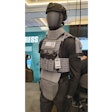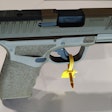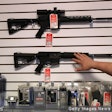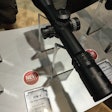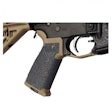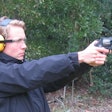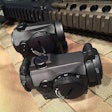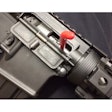Dr. Sydney Vail is a trauma surgeon and one of the nation's leading authorities on tactical medicine and the care of gunshot victims. His articles—"9mm Vs. .40 Caliber" and "Stopping Power: Myths, Legends, and Realities"—are some of the most popular and most controversial in the history of POLICE Magazine and PoliceMag.com.
Vail, who has studied the performance of handgun ammunition in both the gunshot wound patients he has operated on and in the works of researchers like Dr. Martin Fackler, is a strong believer that size of ammunition used in a handgun has much less effect on stopping a threat than shot placement.
In "Stopping Power" he wrote: "I believe the definition of stopping power should be a particular ammunition's effectiveness to render a person unable to offer resistance or remain a threat to the officer, an intended victim, or self.
"So how does ammunition accomplish this? You have two options. You can use a really large round at very high velocity like the 30mm cannon rounds from an Apache helicopter's M230 Chain Gun, which produces substantial kinetic energy, or you can place your shot where it has the most effect. Obviously, shot placement is the only realistic option for a law enforcement officer."
Vail's argument that the stopping power of handgun ammunition is not based on caliber has elicited howls of protest from members of the firearms community who are devotees of particular cartridges, especially the .45 ACP. Vail says he enjoys the debate and he reads the comments on his articles, but he stands by his conclusions about ammo performance based on his experience as a scientist, a surgeon, a shooter, and a tactical medical provider.
The following is an excerpt of a longer interview covering tactical medicince, tourniquet use by officers, and wound ballistics that will be published in the January 2018 Police Magazine and on PoliceMag.com.
POLICE: What's the highest number of rounds you've seen shot into a person who's survived?
Vail: The largest number of bullet wounds has been 22. Some were just entry, some were entry/exits. But 22, I think, was my maximum number. It's not uncommon for me to get 8 or 10 or 12 wounds and people survive.
I got involved in wound ballistics and what it really took to stop a threat during residency in Philadelphia because I had a friend on the police force who lost his job for use of excessive force by shooting somebody, I think it was, 18 times, and I always thought, maybe he needed to shoot that person 18 times to stop the threat.
As a surgeon, I saw what bullets don't do to the human body, meaning they don't kill it, they don't just stop it...which is why I wrote that article about stopping power; it's really a myth. I know that the human body can tolerate many gunshots and still function so that the person is still a threat to the police officer. So I make it known that I am willing to help defend a police officer who is accused of excessive force based on the number of shots fired. If it's a clean shoot, I'm happy to review it. If I can agree with them after that review, then I'll be there to testify for them.
POLICE: Is there really a significant difference in terms of wound ballistics between a 9mm, .40, and .45?
Vail: Other than the size of the ballistic projectile, nope. Because unless you hit something vital, it doesn't matter what you hit them with. You could hit them with a .45 in the shoulder, they're gonna survive. You hit them with a 9mm in the shoulder, they're gonna survive. You hit them with a .22 in the brain they could die. So, stopping a threat really does not come down to caliber, it is shot placement.
Handguns are lousy stoppers; it doesn't matter the caliber, they are just not great at stopping threats. Because of the ballistics profile and the amount of energy that a rifle round carries with it and dumps into the body, a rifle is a much better instrument to stop a threat.
POLICE: Can a significant temporary wound cavity be produced by a handgun bullet?
Vail: You really don't get much of a temporary cavity with a handgun. It's there, but it's minimal as compared to a rifle round and, you know, I think that's where ballistic gel [has value]. It's not my favorite substance in the world, but it demonstrates that if you fire a rifle round into it, the temporary cavity is extremely large. You don't really get much damage from the hydrostatic "pressure" of tissues ripping from a handgun.
Police: Can agencies learn anything about their ammo through gelatin testing?
Vail: Yes. You can look at certain characteristics of the ammo: expansion and depth of penetration. But that's all. And you're comparing those two things in gelatin. How those relate to the human body is where I argue you're getting misinformation because the bullets will not act the same in the human body as they act in gelatin.
POLICE: What ammo do you carry in your personal defense pistol?
Vail: Well, for my SWAT team I carry a .45 with Speer Gold Dots issued. Personally I generally carry my 9mm most often because of its capacity (loaded with Federal HST rounds).










